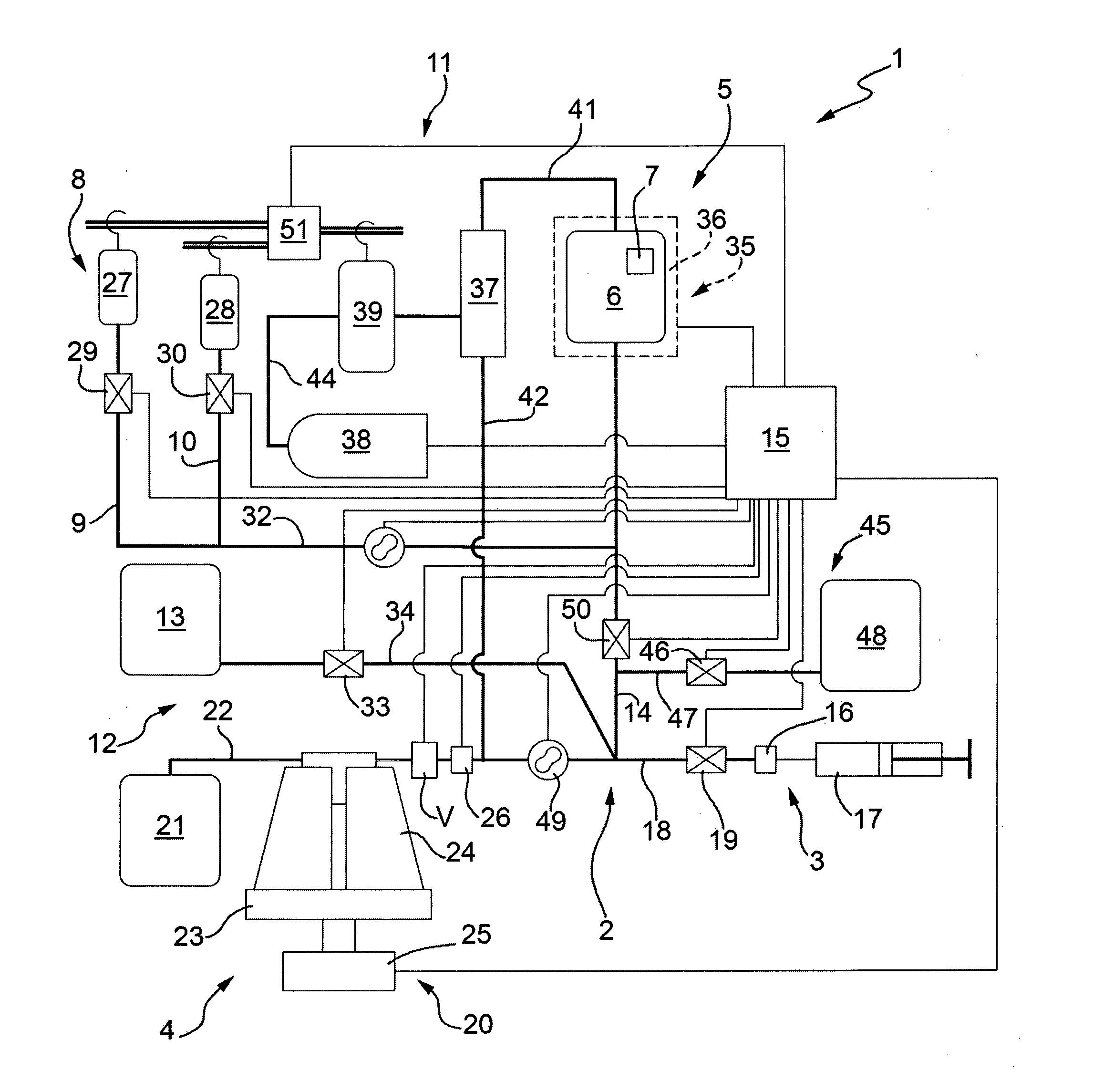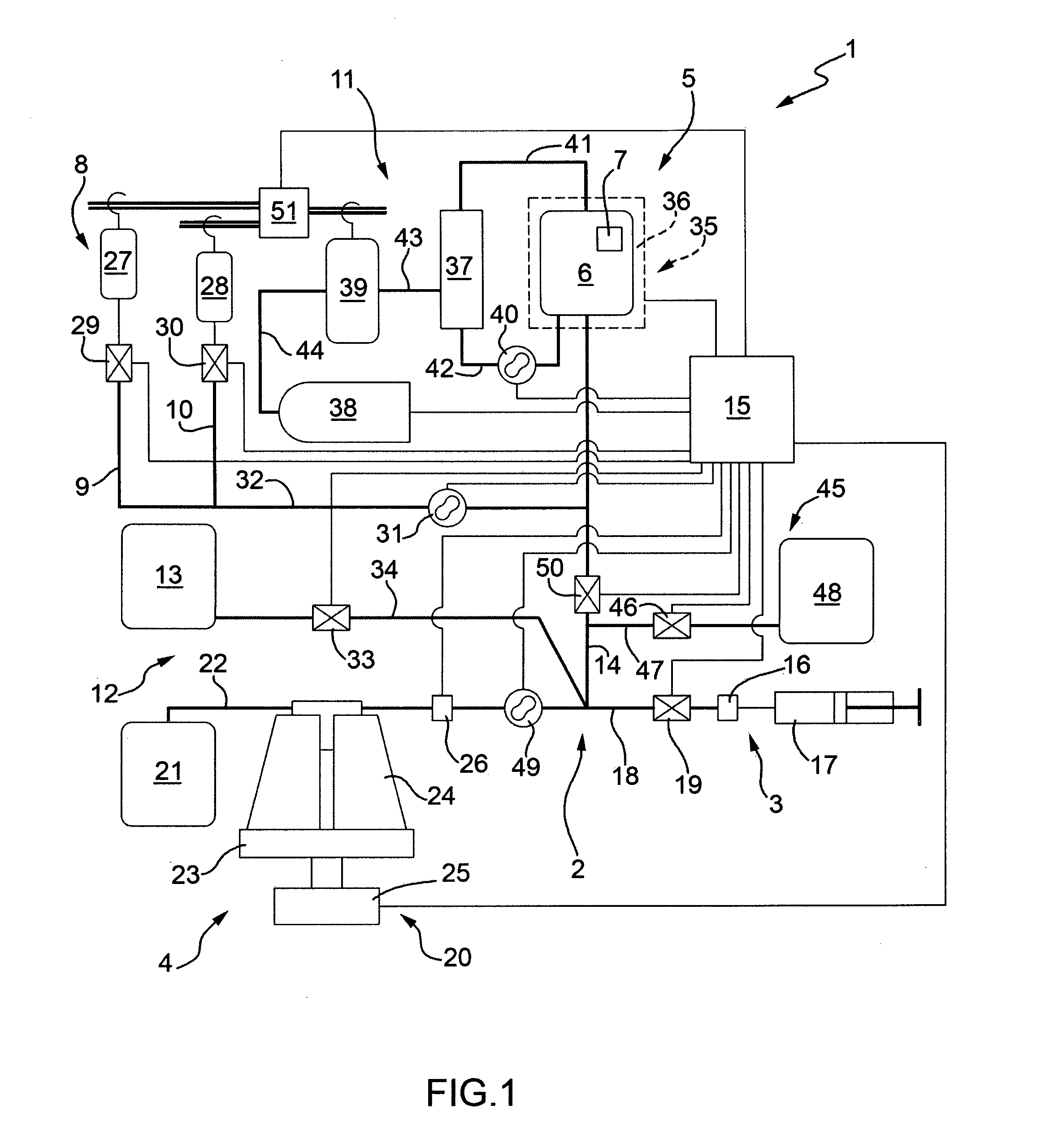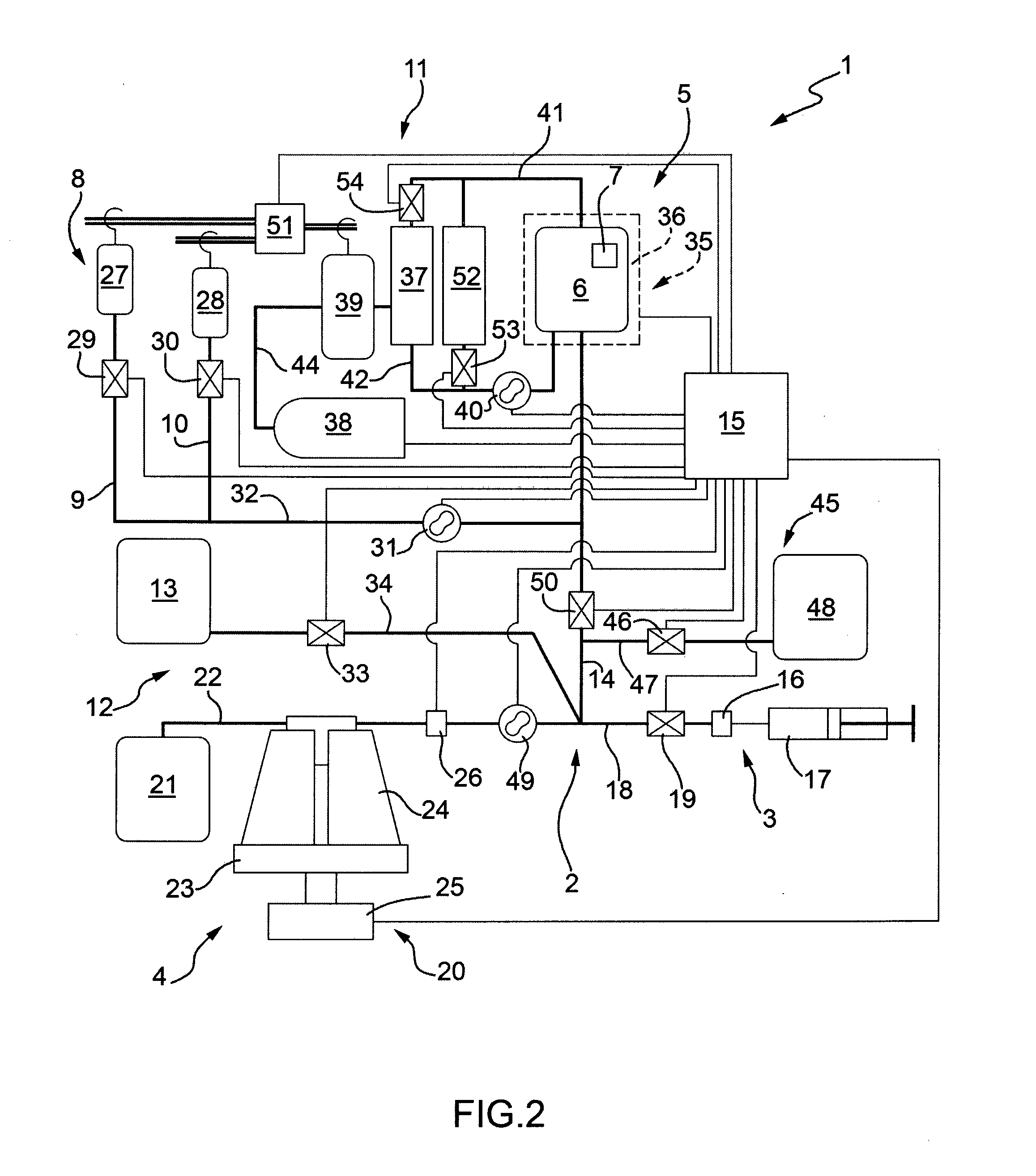Apparatus and Kit For Encapsulating At Least One Compound For Therapeutic and/or Diagnostic Use in Erythrocytes
a technology of erythrocytes and kits, which is applied in the field of kits and apparatus for encapsulating at least one compound for therapeutic and/or diagnostic use in erythrocytes, can solve the problems of increasing the permeability of cells, limiting the use of autologous blood, and requiring increased cell permeability
- Summary
- Abstract
- Description
- Claims
- Application Information
AI Technical Summary
Benefits of technology
Problems solved by technology
Method used
Image
Examples
example 1
[0160]This example discloses operation tests of the device of FIG. 1. The method used hereinafter follows the indications of the description of the operation of apparatus 1 disclosed above with respect to the first aspect of the present invention.
[0161]Eight loading tests with dexamethasone sodium phosphate were performed (employing 500 mg for each procedure) in human red blood cells deriving from 50 ml of whole blood from healthy donors.
[0162]The materials used for the tests are:[0163]device of FIG. 4;[0164]device of FIG. 9;[0165]Hypotonic solution 1 (400 ml with an osmolality of 180 mOsm / Kg), Hypotonic solution 2 (200 ml with an osmolality of 120 mOsm / Kg);[0166]Resealing hypertonic solution (PIGPA) (about 33 mM NaH2PO4; about 1.606 M KCl, about 0.194 M NaCl; about 0.1 M inosine; about 5 mM adenine; about 20 mM ATP; about 0.1 M glucose; about 0.1 M pyruvate; and about 4 mM MgCl2) (7 ml at 2500-3800 mOsm / kg).[0167]Dexamethasone sodium phosphate in aqueous solution 500 mg / 20 ml (used...
example 2
Superparamagnetic Nanoparticles
[0174]Superparamagnetic nanoparticles are already available and used as contrast agents in Magnetic Resonance Imaging (MRI). However, once injected in the blood circulation by i.v. injection, the nanoparticles are rapidly covered by the plasmatic components of the blood, a process known as opsonisation that results pivotal in determining the faith of the nanoparticles making them easily recognisable for the major defence system of the body, i.e. the mononuclear phagocyte system. The encapsulation of superparamagnetic nanoparticles in human erythrocytes has therefore been obtained by the present apparatus, in order to avoid their rapid removal from the blood circulation and therefore obtain broader image time ranges in intravascular magnetic resonance applications (PCT / EP07 / 06349 Delivery of contrasting agents for magnetic resonance imaging). As an example, the loading of the contrast agent SHU555A has been performed by the above disclosed procedure and...
example 3
Contrast Agent Indocyanine Green (ICG)
[0176]Another application of the innovative technique relating to the transport of exogenous molecules into red blood cells is represented by the encapsulation of contrast agents to be used in fluoroangiography or with other optical and / or fluorescence detection methods. As an example, results are shown of the encapsulation of the contrast agent indocyanine green (ICG) obtained with the apparatus as shown in FIG. 2. This is proposed as a new strategy for diagnostic and therapeutic purposes for the display and / or the photocoagulation of new vessels of the choroid in degenerative and vascular diseases of the retina.
[0177]ICG is an infrared (IR) contrast agent containing tricarbocyanine and approved by the FDA for diagnostic use to display the vascularisation of the retina and for photodynamic therapy. Its use as a contrast agent takes advantage of the fact that most biological molecules neither absorb nor emit in the region near IR, thus leading t...
PUM
 Login to View More
Login to View More Abstract
Description
Claims
Application Information
 Login to View More
Login to View More - R&D
- Intellectual Property
- Life Sciences
- Materials
- Tech Scout
- Unparalleled Data Quality
- Higher Quality Content
- 60% Fewer Hallucinations
Browse by: Latest US Patents, China's latest patents, Technical Efficacy Thesaurus, Application Domain, Technology Topic, Popular Technical Reports.
© 2025 PatSnap. All rights reserved.Legal|Privacy policy|Modern Slavery Act Transparency Statement|Sitemap|About US| Contact US: help@patsnap.com



